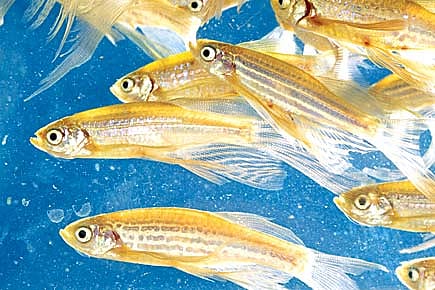Making Disease Transparent

The tiny zebrafish is unveiling information on cancer and heart disease
The tiny zebrafish is unveiling information on cancer and heart disease
As newspapers carry reports of the sequencing of the genome of the zebrafish by Indian scientists at the Institute of Genomics and Integrative Biology (IGIB), New Delhi, the ordinary reader would have good reason to ask why this fuss about a tiny aquarium pet. But the breakthrough is crucial. The fish native to South Asia has already provided crucial information on cancer, cardiac collapse and blindness. In some ways if scientists had designed an organism to study development of diseases, they couldn't have done better than the zebrafish. The embryo itself is transparent and develops outside the mother's body, allowing each stage to be studied with great precision.
In research of great interest in our skin fairness obsessed country, scientists found that the gene SLC24A5 responsible for differences in golden-toned zebrafish and dark-striped zebrafish has the same affect in humans. A particular variant of this gene distinguishes Europeans from all other humans in complexion.
Scientist have also managed to modify the adult fish to create transparent creatures that allow the study of the progress of diseases. At the Harvard Medical School, Richard Mark White has transplanted melanoma cancer into the see-through fish to watch cancer spread in a living organism. The fish reveal a pattern in the cancer spread, information vital to tackling the disease. At the University of California, San Diego, scientists added excess cholesterol to the zebrafish diet and observed the development of plaques in the blood vessels of the transparent animal. Fish fed on this diet developed little fish bellies.
2025 In Review
12 Dec 2025 - Vol 04 | Issue 51
Words and scenes in retrospect
Just last month, two more breakthroughs have been announced. The first promises progress on the treatment of blindness and the other a solution to the mystery of sudden cardiac arrest in athletes. The sequencing will now ensure that the study of diseases can be directly correlated to the genes involved. Meanwhile, the scientists at IGIB are already moving ahead to study the range of genetic variations in the fish—'Project Kaurava', as it's called, will compare genetic variations in 100 siblings from a single parent zebrafish.
